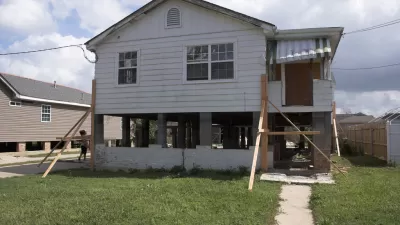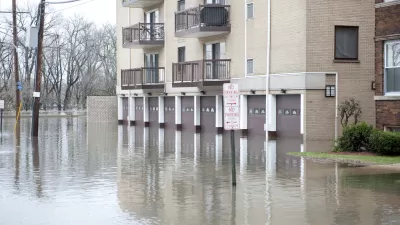Risk-management experts are seeking creative ways to finance resilience investments that prevent damage from natural disasters. Insurance markets, with their direct stake in protecting homes and businesses, can be key partners in this effort.
Broadly speaking, the world of insurance can be divided into two different sectors: private insurance companies and government-run programs. In the United States, the latter have long enticed policyholders to embrace resilience through a simple reward system: make risk-reducing upgrades to your building, and we’ll lower your insurance rates. This mechanism underlies much of the thinking about the power of insurance markets to drive resilience investments. Consider the National Flood Insurance Program (NFIP), America’s federal flood-insurance provider. Established in 1968, and today administered by the Federal Emergency Management Agency (FEMA), the NFIP partners with more than 80 private insurers to provide insurance to property owners if their communities agree to adopt ordinances that reduce the risk of flooding. For the NFIP, measures such as elevating the lowest floor above the base flood elevation qualify homeowners for reduced rates. Strategies like these can be hugely effective. As detailed in a 2015 report by the nonprofit Enterprise Community Partners, one multifamily building in Hoboken, New Jersey, installed floodwater vents and elevated the first floor to ground level. The $25,000 retrofit reduced the cost of flood insurance by 83%, with a return on investment of less than three years. (The owner originally paid $12,000 for $300,000 worth of coverage; after the retrofit, the premium dropped to $2,000 for $820,000 worth of coverage.)
FULL STORY: Can insurance markets jump start resilience?

Alabama: Trump Terminates Settlements for Black Communities Harmed By Raw Sewage
Trump deemed the landmark civil rights agreement “illegal DEI and environmental justice policy.”

Planetizen Federal Action Tracker
A weekly monitor of how Trump’s orders and actions are impacting planners and planning in America.

Why Should We Subsidize Public Transportation?
Many public transit agencies face financial stress due to rising costs, declining fare revenue, and declining subsidies. Transit advocates must provide a strong business case for increasing public transit funding.

Understanding Road Diets
An explainer from Momentum highlights the advantages of reducing vehicle lanes in favor of more bike, transit, and pedestrian infrastructure.

New California Law Regulates Warehouse Pollution
A new law tightens building and emissions regulations for large distribution warehouses to mitigate air pollution and traffic in surrounding communities.

Phoenix Announces Opening Date for Light Rail Extension
The South Central extension will connect South Phoenix to downtown and other major hubs starting on June 7.
Urban Design for Planners 1: Software Tools
This six-course series explores essential urban design concepts using open source software and equips planners with the tools they need to participate fully in the urban design process.
Planning for Universal Design
Learn the tools for implementing Universal Design in planning regulations.
Caltrans
Smith Gee Studio
Institute for Housing and Urban Development Studies (IHS)
City of Grandview
Harvard GSD Executive Education
Toledo-Lucas County Plan Commissions
Salt Lake City
NYU Wagner Graduate School of Public Service





























